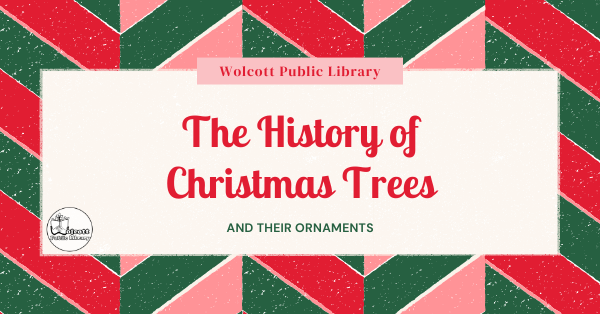And their ornaments.

Every year many of us haul a whole tree into our homes: pretty wild when you think about it! But do you know where the tradition got started?
Early Times
Evergreens are just that, ever-green. And while we were shivering in the dark and cold, they were thriving just as well as they did all year round. More, by comparison! This has made these plants signify power and life to humans for a long time. These trees have long been thought to have the power to ward off evil spirits, demons, and other supernatural threats.
As the winter solstice, December 21st, the darkest day of the year approaches in the Northern Hemisphere, many cultures have held beliefs that their sun Gods were losing power, and those celebrations carried the joy that their Gods’ powers were returning alongside the warmth and plant life the evergreens carried a reminder of.
Beginnings of a “Christ”mas Tree
The more modern incarnation of this tradition dates back to 17th century Germany. There is a myth that Martin Luther, on a walk home late at night, was struck by the beauty of the stars in the sky, and in honor of God’s creation, brought home a tree and decorated it with candles to bring this experience to his family.
A more likely source may be found in medieval German Christmas plays. These would contain scenes of Adam and Eve alongside an evergreen hung with apples, the only greenery and the traditional fruit combining into what become our indoor spruces and red glass baubles.
The Tree Comes to the U.S.
German settlers brought this tradition with them to Pennsylvania, but the tradition’s association with pagan practices kept it from gaining popularity in the U.S. at first. However, as a combination of Irish and German immigrants came to the states, the aversion had less of a hold. When the German Prince Albert was pictured alongside Victoria and their family around the tree, the image popularized the tradition in Britain and the U.S.
Creating Modern Ornaments
German-Americans upheld traditional decorations that included apples, cookies, and other snacks that could hold up while hung on a tree. The U.S. used mostly handmade decorations. With electricity, tree lights come, and around this time, Christmas trees in public spaces grow in popularity.
Bauble ornaments originate in the 1800s, said to originally be made by Hans Greiner in Germany. American companies, starting with Woolsworth’s, begin importing German ornaments, then ornaments of the same style that begin to be mass-produced outside Germany.
Hallmark introduced “keepsake” collectible ornaments in 1973, creating a tradition of marking time and significant events with ornaments, interesting in connection with the symbolism of evergreens. Personally, I can count my Christmases in Radko ornaments.
We made our own Christmas ornaments at WPL this week. If you want to participate in fun events like that, head over to our event page to see what’s going on and follow us online for updates! Check out our upcoming Rising Lights event on holiday light traditions.
